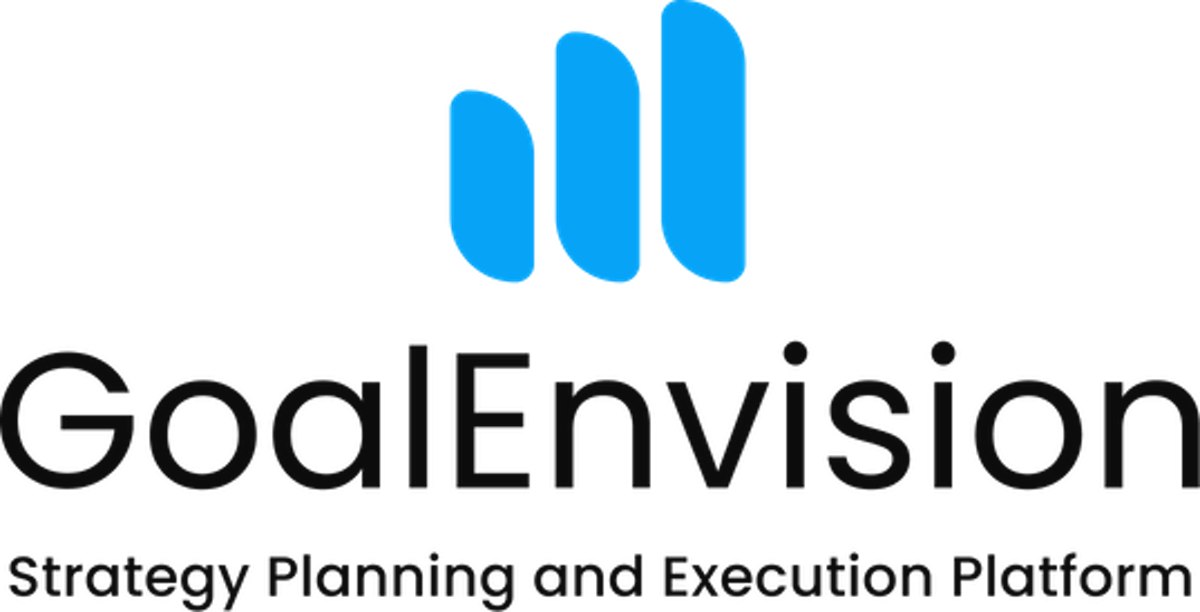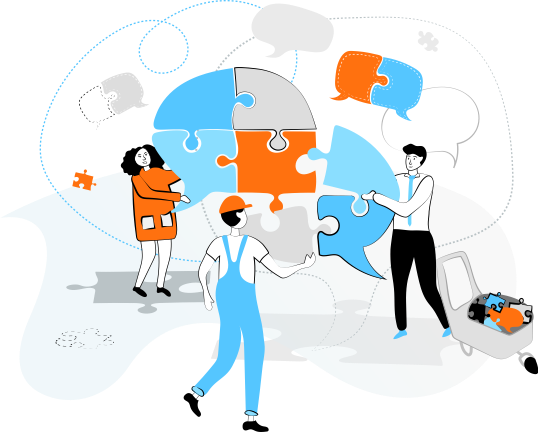Agile? Agile way of working? Agile working methods? We explain!
Share this article
Agile working methods focus on flexibility and rapid adaptation to change, which is crucial in today's dynamic business world. Originating from software development, agile is based on four main values: emphasis on individuals and interactions, working products, customer collaboration and response to change. Popular agile methods include Scrum and Kanban, which promote iterative development and self-organising teams. Agile leads to increased customer satisfaction, improved product quality and higher team motivation.
In an increasingly fast-changing and dynamic world, the need for flexible and adaptable working methods has become more and more prominent. This is where the term 'agile' comes into play. Originally developed in the software industry, agile methods represent a revolutionary change in the way projects and work are managed, moving beyond traditional, rigid and strictly planned processes.
What does "Agile" mean?
The word 'agile' refers to agility and adaptability. In the context of project management and business development, it implies a methodology that prioritises flexibility, rapid responses to change and a strong focus on customer needs. This methodology is a reaction to the more traditional and inflexible ways of managing projects that are not always able to cope with rapid change or unclear requirements.
The Four Pillars of Agile Methods
Agile methods rest on four core values:
- Individuals and Interactions: Emphasises the importance of teamwork and communication over strict processes and tools.
- Working Product: Focus on delivering a working product rather than getting bogged down in extensive documentation.
- Customer Collaboration: Prioritises close collaboration with the customer throughout the project.
- Response to Change: Encourages rapid adaptation to changing conditions, rather than strictly following a predetermined plan.
How Agile Methods are used
Agile methods are often applied through different techniques and frameworks, such as Scrum and Kanban, which all share some common features:
Scrum: This is a popular method that divides the project into short, manageable periods (sprints), where small parts of the final product are developed and delivered in stages.
Kanban: focuses on visualising the workflow and minimising the number of ongoing tasks to increase efficiency.
Read more about Scrum and Kanban here...
Benefits of Agile Methods
Using agile methods in your project or organisation can offer many benefits:
- Flexibility: Agile methods allow the team to quickly adapt to changing needs and conditions.
- Increased customer satisfaction: Through continuous delivery and active customer engagement, the product can better meet the actual needs of the customer.
- Improved Product Quality: Regular reviews and adjustments throughout the project help detect and fix problems early.
- Team Motivation: The methods promote autonomy and self-organisation within the team, which can increase engagement and job satisfaction.
Read more about agile leadership here...

How to work agile and with agile working methods in GoalEnvision:
GoalEnvision, a strategy tool for formulating and implementing business strategies, can be adapted and used to support agile working methods. Although GoalEnvision is primarily focused on strategic planning and monitoring, there are several ways it can complement and support an agile approach:
Try GoalEnvision for 30 days free of charge, click here...
1. Formulate an Adaptable Vision and Mission statement
With GoalEnvision, you start by defining a vision and a mission statement. In an agile context, it is important that these are flexible enough to adapt to changing market conditions or customer needs. With GoalEnvision, you can regularly review and adjust your vision and mission to ensure they remain relevant and in line with agile principles.
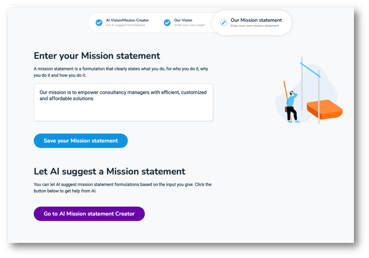
2. Setting and Monitoring Growth- and Strategic goals
Agile methods emphasise the importance of setting and tracking short-term, measurable goals, which is in line with GoalEnvision's functionality for creating growth- and strategic goals. By breaking these goals down into smaller, manageable parts and continuously measuring progress, you can use GoalEnvision to support the iterative and flexible approach that is at the heart of agile working.
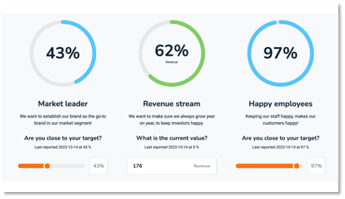
3. Using Flexible Measurement Methods
GoalEnvision offers various metrics, including objective measures and surveys, that can be customised to measure progress in an agile way. For example, in an agile team, you can use these tools to regularly gather feedback and measure customer satisfaction, team performance or progress towards strategic goals.

4. Agile Reporting and Monitoring
GoalEnvision enables regular and systematic follow-up of goals and conditions. In an agile context, this means you can have short monitoring cycles where you can quickly adjust strategies and actions based on the latest results and feedback. This supports the agile principle of being responsive and ready to make changes.
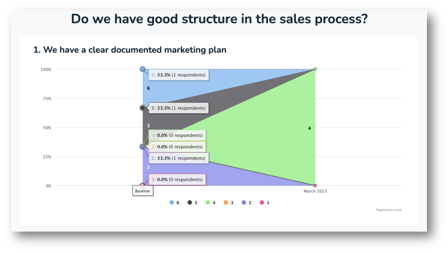
5. Strengthening Team Autonomy and Co-operation
By defining clear roles and responsibilities within GoalEnvision, such as owners, management members and key contributors, you can promote self-organising and autonomous teamwork. These roles can be adapted and used to give team members the responsibility and authority to make their own decisions and drive their parts of the project, which is an important part of agile methods.

6. Using AI to Support Agile Processes
GoalEnvision's AI capabilities, such as the AI Vision Creator, can be used to quickly generate and adjust visions and business ideas. This can be particularly useful in agile environments where changes and adaptations need to be made quickly based on new information or changing customer needs.

Share this article
Did you like this article? Here is more...
Latest
